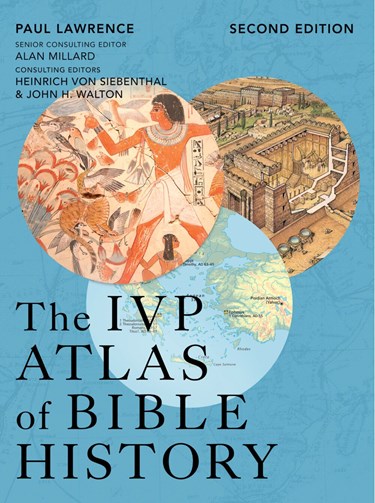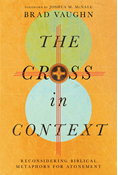
|
The IVP Atlas of Bible History
casebound
|
- Length: 192 pages
- Dimensions: 9 × 12 in
- Published: February 04, 2025
- Imprint: IVP Academic
- Item Code: A1178
- ISBN: 9781514011782
-
Other Retailers:
Amazon*
*affiliate partner
Open Your Understanding of the World of Scripture
The story of the Bible is inextricably linked to the land. To understand biblical history, we need to understand how the people, events, and geography interacted to form that ancient world.
Spanning three thousand years of biblical history, The IVP Atlas of Bible History reveals the many fascinating ways that history and archaeology confirm and complement the Bible's story. Taking a narrative approach, the atlas traces the unfolding of major events in the Old and New Testaments, from Abraham's wanderings in Canaan and Egypt to Paul's missions and the founding of new churches. It covers the many places of the world of the Bible, from Spain to Iran, from Yemen to Greece. Scholarly insights presented in a readable style add depth and color to our understanding of key people and stories in Scripture.
Features and benefits you'll find in The IVP Atlas of Bible History:
- Ninety-seven maps to help understand the biblical narrative and provide background information
- More than 150 color photographs, panoramic illustrations, and site plans, plus a range of battle plans and small artworks
- Special features on subjects such as the peoples and languages of the Bible that will deepen understanding of geography, landscape, climate, culture, and religion.
This is the perfect companion for anyone seeking a clear, reader-friendly, visual introduction to the history of the Bible.
CONTENTS
Introduction
Chronology of the Events of the Bible and the Ancient Near East
Map of Israel in Old and New Testament Times
What Is the Bible?
Creation
The Flood
Nations and Languages
Languages of the Bible
Mesopotamia
The Patriarchs: The Biblical Evidence
Archaeological Evidence for the Patriarchs
Egypt
Joseph
Moses
The Ten Plagues
The Exodus
The Giving of the Law
The Tabernacle
The Conquest of Transjordan
The Conquest of Canaan: Jericho and Ai
The Conquest of Canaan: The Defeat of the Kings
Evidence of the Conquest of Canaan
The Geography of Canaan
The Climate of Canaan
The Agriculture of Canaan
The Twelve Tribes of Israel
The Judges
The Philistine Threat
The Establishment of the Hebrew Monarchy
David's Conquests
David's Latter Years
Writing
Archives and Libraries of the Ancient World
Solomon
Solomon's Temple
Solomon's Trade
The Division of the Kingdom
The Neighbors of Israel and Judah
The Kings of Israel
The Hebrew Prophets
Assyria: The Threat from the North
The Israelites Exiled
The Kings of Judah
Hezekiah and Sennacherib
Jerusalem Delivered
Warfare and Fortifications
Judah from Manasseh to the Fall of Nineveh
Josiah and the Rise of Babylon
Judah Exiled
The Later Hebrew Prophets
The Trade of Tyre
Daniel and Nebuchadnezzar
The Fall of Babylon and Cyrus's Decree
Rebuilding the Temple
Xerxes and Esther
Ezra and Nehemiah
Alexander the Great and the Spread of Hellenism
The Ptolemies and Seleucids
Antiochus Epiphanes and the Maccabean Wars
The Jews in Egypt
The Jews in the Second and First Centuries BC
The Romans
Herod the Great
Herod the Great Rebuilds the Temple
Amulets and Scrolls
Jesus Is Born
The Ministry of Christ: First Year
The Ministry of Christ: Second Year
Jerusalem in New Testament Times
The Ministry of Christ: Final Year
Jesus' Death and the Empty Tomb
The Birth of the Church
Travel in the Roman World
Paul's First Journey: Cyprus and Asia Minor
Paul's Second Journey: Philippi and Thessalonica
Paul's Second Journey: Athens and Corinth
Paul's Third Journey: Ephesus
Paul's Third Journey: From Ephesus to Jerusalem
Paul's Journey to Rome
The Letters of the New Testament
Rome
The Fall of Jerusalem
The Seven Churches of Asia: Ephesus, Smyrna, Pergamum
The Seven Churches of Asia: Thyatira, Sardis, Philadelphia, Laodicea
The Spread of Christianity
Glossary
Bibliography
Index
Gazetteer
Scripture Reference Index
Picture Acknowledgments












